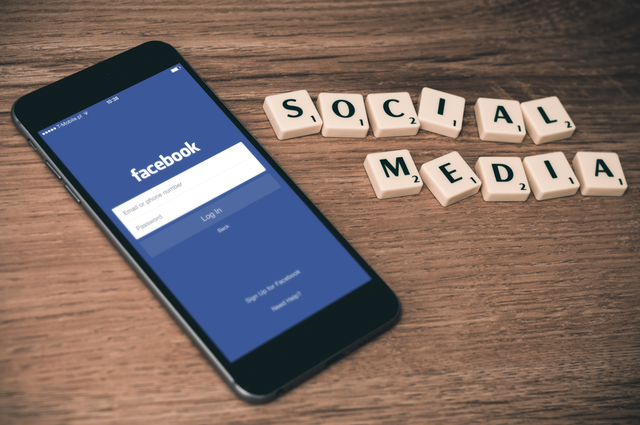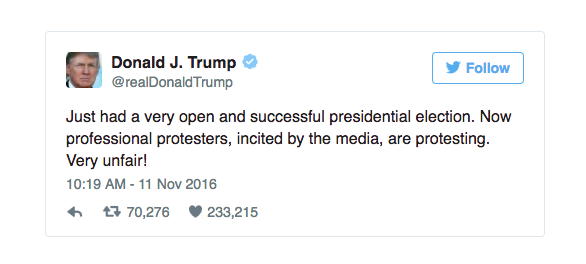
As we said in previous post, fake news is always created and spread via social media and fake news sites. Here is a case study that perfectly tells you how a random tweet can go viral and turns into a hot issue in States from a twitter account that only has 50 followers. You can never imagine how easy it is to spread wrong and uncertain information because it simply takes you few seconds to press the SHARE button.
Eric Tucker, a 35-year-old co-founder of a marketing company in Austin, Tex., had just about 40 Twitter followers. He tweeted about paid protesters being bused to demonstrations against President-elect Donald J. Trump on Nov 2016 and this spread all over the nations. Even Trump join promoting this news. Tucker’s post was shared at least 16,000 times on Twitter and more than 350,000 times on Facebook. The problem is that Tucker actually got it wrong because there were no such buses packed with paid protesters. Let us see how a single tweet get viral.

Initial tweet from Eric Tucker
On 9th Nov 2016, Tucker took photos of numbers of buses he saw in Austin and he thought it was unusual after reading reports of protests against Trump. He thought the two were connected so he posted three of the images with the declaration:
“Anti-Trump protestors in Austin today are not as organic as they seem. Here are the busses they came in. #fakeprotests #trump2016 #austin”
Tucker said he had searched to see if any conferences were being held in the area but did not find anything. (however the buses were in fact hired by a company called Tableau Software, which was holding a conference that drew more than 13,000 people.) Several hours later, his tweet was posted to the Reddit community for Trump under the heading: “BREAKING: They found the buses! Dozens lined up just blocks away from the Austin protests.” It quickly generated more than 300 comments.

On the next day, Facebook and some forums started reposting the post. These posts were shared and reposted from everywhere on internet and had reached hundred thousands of internet users. On 10th Nov, Donald J. Trump wrote this tweet that makes people confused whether his is referring to the message about the buses. Tableau clarified that the buses were connected to the company’s conference on the next day. However, Tucker’s initial tweet continued to generate thousands of shares on Facebook through different pages. Tucker finally deleted his original tweet, then posted an image of it stamped with the word “false” for posterity. However, it did not receive much attention.
And BOOM! The old big bad post is gone! Its memory shall live on! Thanks all! Let's keep the conversation moving! https://t.co/DHz37Le9i8 pic.twitter.com/YME1TN4q4D
— erictucker (@erictucker) November 12, 2016
This case study may not fully illustrate every single case of fake news. However, it is definitely a good example to show how power a tweet can turn to be a national topic. Like you and me, Tucker made use of his social media network to express what he saw and what he believed is true online. Obviously, Tucker did not fact check before he posted because he genuinely thought the buses were related to Trump. There were some mainstream media noticed the trending tweet and contacted Tucker for validation. However, no one stood up to tell the truth or clarify until the bus company made its statement.
It is worth noticing that Tucker’s tweet was not only spread on twitter but also reposted and shared among different platforms such as Facebook and Reddit. The posts then went viral all over the internet. No one cared where was the message come from or whether it was true or not. Of course, there were people who simply read the headlines and believed it.
On the next post, we will be talking about other notorious fake news generated online in 2016.
Leave a Reply